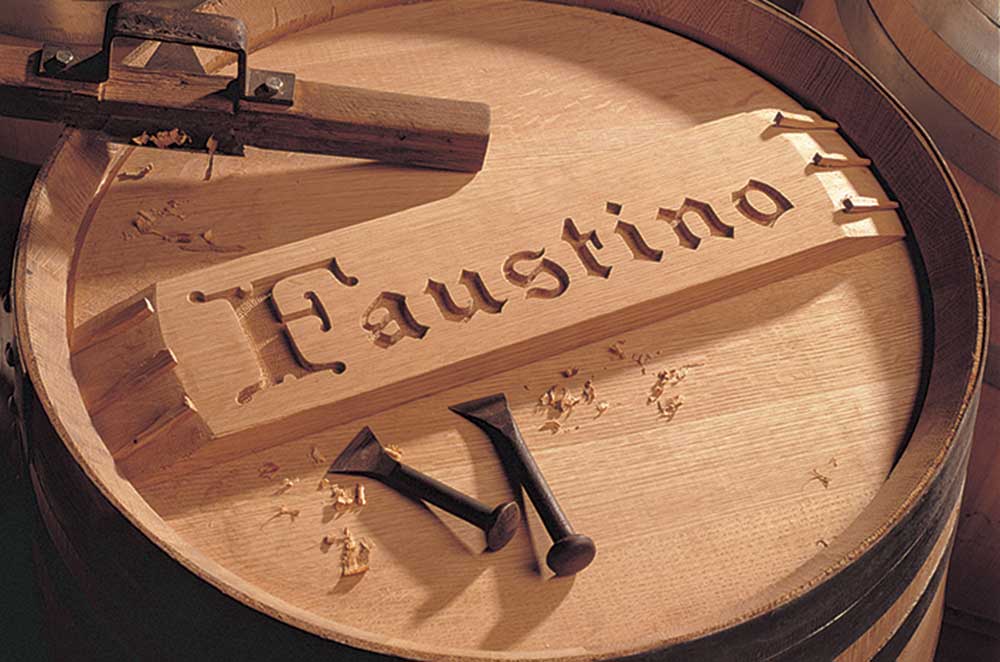Promotional feature
Essentially the founding father of Faustino, Eleuterio Martinez Arzok was a man with plenty of plans and an abundance of ambition when, in 1861, he acquired a manor house and its attached vineyards in the Rioja municipality of Oion.
Regrettably his aspirations were doomed to fail, as no amount of foresight could have predicted the tide of phylloxera which would soon decimate great tracts of European vineyards.
Nonetheless, this family-owned concern endured and in 1920 Faustino Martinez Pérez de Albéniz began to re-establish the wrecked vineyards alongside his father.
Today Faustino operates 650ha of prime Rioja Alavesa vineyards, with over 100 countries around the globe enjoying the fruits of its labour and, with Faustino I, can lay claim to making the world’s biggest selling Rioja Gran Reserva.

Yet, despite its accomplishments there’s rarely a lull at Faustino and its ongoing evolution is perfectly encapsulated by a trio of new wines: Gran Faustino 1955; Faustino Art Collection Willy Ramos Edition and Icon Reserva Especial (the 2014 vintage being the current and only second release).
With the Gran Faustino 1955, 2018 celebrates the 55th year since it first saw the light of day in 1963 following eight years of ageing. Faustino has marked this by releasing 2,555 bottles of the remaining few and it’s something of a history lesson.
Presented in a slender, Germanic-style bottle more associated today with Riesling and alike, this was a design which was hugely popular in Rioja in the 1950s. The lettering and imagery of original labels and official seals also evoke the period, as does a wrapping of silk paper which replicates a page from a 1955 local newspaper.
Protective handling of grapes at this time was a far less accurate science, so a fleet of easy-going mules or horses to transfer the fruit in baskets strapped to its sides was both vital and often as good as it got, plus minimising the distance between vineyard and cellar (where they went through a fermentation process akin to semi-carbonic maceration) was essential.
The Faustino Art Collection is very much a recognition of Faustino here and now; this 100% Tempranillo being a tribute to one of the country’s foremost artistic figures (and Faustino fan) Willy Ramos who emigrated from Colombia to Spain when he was 14 years old. Ramos was charged with the task of reimagining Rembrandt’s portrait of Dutch merchant Nicolaes Van Bambeeck which graces Faustino’s wines, and following months in his studio and hundreds of discarded sketches, the result in Ramos’ own words is ‘something amazing; full of colour, full of life, full of emotion, like Faustino’s wines’.
Finally comes the Icon Reserva Especial which, other than a dose of 5% Graciano, is pure Tempranillo, handpicked from low-yielding bush vine (each vine producing only just over 1kg of grapes) which are around 35 year’s old and planted on a 6ha plot at an altitude of 500m, producing a wine aged in French wood for 18 months then a further two in bottle before release.

The new wines.
Faustino certainly sits pretty, comfortably positioned as one of Spain’s most prominent wine brands. Yet it clearly continues to plough on with no intention of deviating from its path, perpetually adding texture and depth to its range of wines, thereby both consolidating its enviable standing as well as engaging with new audiences and devotees; world renowned artists or not.







